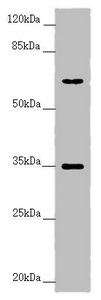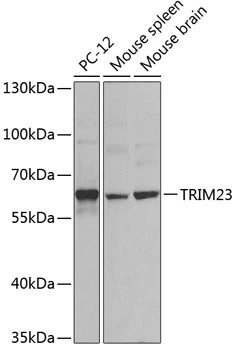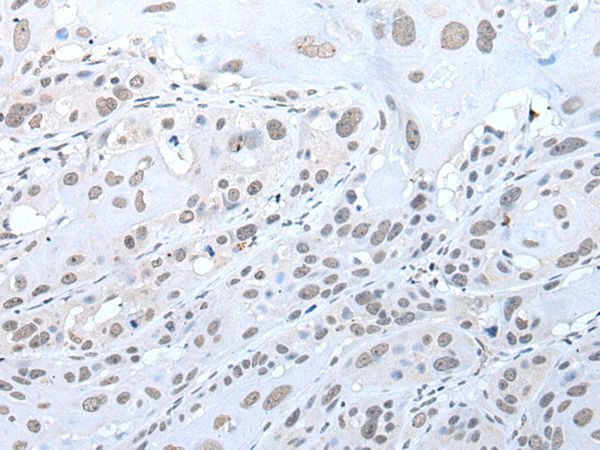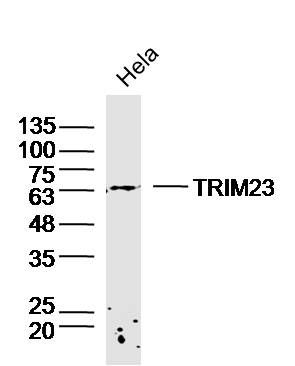TRIM23 antibody [N1], N-term
GTX100057
ApplicationsImmunoFluorescence, Western Blot, ImmunoCytoChemistry, ImmunoHistoChemistry, ImmunoHistoChemistry Frozen, ImmunoHistoChemistry Paraffin
Product group Antibodies
TargetTRIM23
Overview
- SupplierGeneTex
- Product NameTRIM23 antibody [N1], N-term
- Delivery Days Customer9
- Application Supplier NoteWB: 1:500-1:3000. ICC/IF: 1:100-1:1000. IHC-P: 1:100-1:1000. *Optimal dilutions/concentrations should be determined by the researcher.Not tested in other applications.
- ApplicationsImmunoFluorescence, Western Blot, ImmunoCytoChemistry, ImmunoHistoChemistry, ImmunoHistoChemistry Frozen, ImmunoHistoChemistry Paraffin
- CertificationResearch Use Only
- ClonalityPolyclonal
- Concentration0.67 mg/ml
- ConjugateUnconjugated
- Gene ID373
- Target nameTRIM23
- Target descriptiontripartite motif containing 23
- Target synonymsARD1, ARFD1, RNF46, E3 ubiquitin-protein ligase TRIM23, ADP-ribosylation factor domain protein 1, 64kDa, ADP-ribosylation factor domain-containing protein 1, ARF domain protein 1, GTP-binding protein ARD-1, RING finger protein 46, RING-type E3 ubiquitin transferase TRIM23, tripartite motif protein TRIM23, tripartite motif-containing protein 23
- HostRabbit
- IsotypeIgG
- Protein IDP36406
- Protein NameE3 ubiquitin-protein ligase TRIM23
- Scientific DescriptionThe protein encoded by this gene is a member of the tripartite motif (TRIM) family. The TRIM motif includes three zinc-binding domains, a RING, a B-box type 1 and a B-box type 2, and a coiled-coil region. This protein is also a member of the ADP ribosylation factor family of guanine nucleotide-binding family of proteins. Its carboxy terminus contains an ADP-ribosylation factor domain and a guanine nucleotide binding site, while the amino terminus contains a GTPase activating protein domain which acts on the guanine nucleotide binding site. The protein localizes to lysosomes and the Golgi apparatus. It plays a role in the formation of intracellular transport vesicles, their movement from one compartment to another, and phopholipase D activation. Three alternatively spliced transcript variants for this gene have been described. [provided by RefSeq]
- Storage Instruction-20°C or -80°C,2°C to 8°C
- UNSPSC12352203
References
- Kahle JJ, Gulbahce N, Shaw CA, et al. Comparison of an expanded ataxia interactome with patient medical records reveals a relationship between macular degeneration and ataxia. Hum Mol Genet. 2011,20(3):510-27. doi: 10.1093/hmg/ddq496Read this paper







